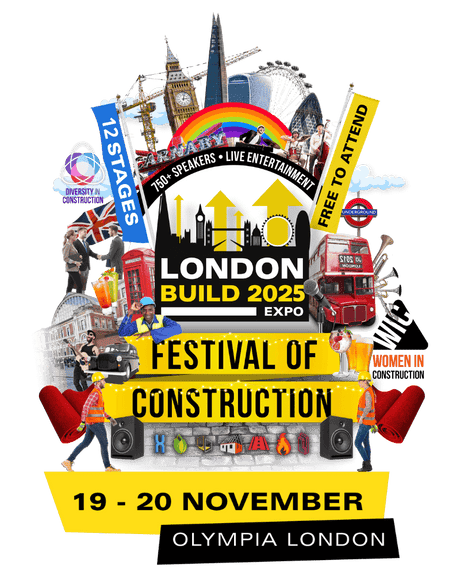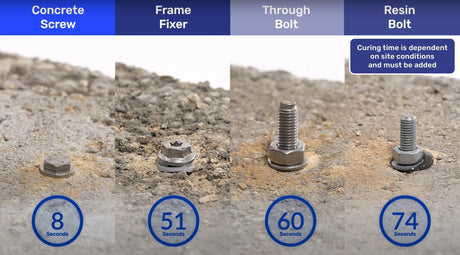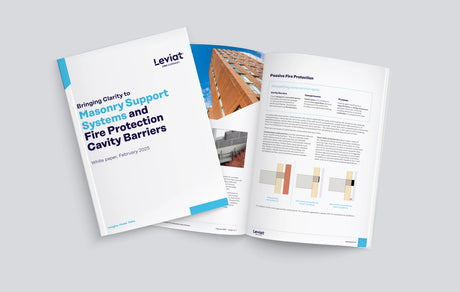"I’m buying a product that’s supposed to protect my building from fire. How can I possibly be sure it actually works? Is there a rigorous process behind this, or is it just a simple test?"
This is one of the most important questions a builder, specifier, or building owner can ask. In the world of passive fire protection, the integrity of a building’s fire safety system rests on a foundation of trust. That trust isn't built on a promise; it's built on a methodical, scientifically verified process of testing and certification.
It’s easy to assume that a cvity barrier is just a cavity barrier, but the reality is far more complex. The performance of these critical components can mean the difference between life and death. The fire testing process for cavity barriers and other passive fire protection products in the UK is a multi-layered, highly regulated procedure designed to eliminate doubt and ensure performance under the most extreme conditions. It involves everything from manufacturing audits to destructive furnace tests, all to guarantee that a product labelled as "fire-rated" will perform exactly as expected when a real fire strikes.
In this article, we'll pull back the curtain on the entire fire barrier testing process, answering your most pressing questions and explaining why this unseen work is the most important part of a fire barrier's journey from a factory floor to a building’s walls.
Contents:
- Do all fire cavity really need to be tested? What standards do they have to meet?
- Where are these tests carried out? Are the results from different places comparable?
- Is the test just a one-off event? How do you know the products made in the factory are the same as the ones that were tested?
- What happens during the actual test? What does it look like?
- What's the difference between testing a 'full fill' barrier and an 'open state' barrier? Why do they need different tests?
- So, why should you care about all these details?
- Summary
Do all cavity barriers really need to be tested? What standards do they have to meet?
Yes. Absolutely. Without a doubt. All cavity barriers and other fire protection products must be fire-tested. This isn't a recommendation; it's a legal and ethical necessity. The UK's Building Regulations, specifically Approved Document B (Fire Safety) [5], mandates that all components used to create fire compartments have a certified fire performance. The only way to prove this performance is through rigorous, standardised testing.
The fire safety industry has developed a number of comprehensive test standards to ensure products are tested in a consistent and repeatable manner. The key is to make sure the test standard is applicable to the specific application for which the product is being used. Different types of barriers and different installation scenarios require different test standards.
For full fill cavity barriers, which are rigid or semi-rigid materials that completely fill a cavity, the most commonly used standards are:
- BS 476-20: Fire tests on building materials and structures. This is a legacy British Standard that is still widely used and recognised in the UK. Part 20 specifically relates to the method for determination of the fire resistance of elements of construction. It measures how well the product maintains its integrity and insulation properties when exposed to fire on one side.
- BS EN 1366-4: Fire resistance tests for service installations [2]. This is the more onerous European equivalent and now the preferred standard. It provides a test method for determining the fire resistance of linear joint seals and is crucial for products used in construction joints, including cavity barriers.
For open state cavity barriers, which are designed to allow ventilation in the cavity under normal conditions but seal shut in a fire, a different set of standards is required to prove their unique function:
- BS EN 1363-1: Fire resistance tests [2]. This is a fundamental standard for determining the fire resistance of various building elements.
- TGD 19 (Technical Guidance Document 19): This is a key document for the fire performance of external cladding systems and open state cavity barriers. It sets out the specific test method and performance criteria for these products, including how they must expand to fully close the cavity when exposed to fire. It is often a specific requirement in complex external wall system designs, particularly in high-rise buildings.
The existence of numerous standards highlights the complexity of the industry. A specifier or builder must understand the application and ensure the product they choose has been tested to the correct standard for that specific use. Simply buying a product that has been "fire tested" is not enough; the test must be relevant and certified.
Where are these tests carried out? Are the results from different places comparable?

Fire testing is not a job for a back-alley garage. Products should always be tested at a recognised facility [1]. In the UK and Europe, this means a laboratory that is accredited by a national accreditation body. The primary body in the UK is the United Kingdom Accreditation Service (UKAS) [1].
UKAS is the sole national accreditation body recognised by the government to assess, against internationally agreed standards, organisations that provide certification, testing, and inspection services. When a fire test facility is UKAS-accredited, it means it has been rigorously audited to ensure its testing procedures, equipment, staff competence, and reporting are all of the highest standard.
The theory, which is upheld in practice, is that a test conducted to a standard like BS EN 1366-4 at a UKAS-accredited laboratory in the UK, or in another European country with a similar accreditation body, will produce the same result. This ensures that a product's performance can be easily and reliably compared regardless of where the test was conducted. Key UKAS-accredited test facilities in the UK include leading names like Warringtonfire (part of Element Materials Technology) [6] and BRE (Building Research Establishment) [7], both of which have a long and respected history in the field. The consistency of these results provides crucial confidence to the end user that the product's fire rating is robust and dependable.
Is the test just a one-off event? How do you know the products made in the factory are the same as the ones that were tested?
The actual fire test is just one part of a much larger, ongoing commitment to quality. Before a manufacturer, AIM for example, even produces the seals for a test, a representative from the UKAS-accredited laboratory will often conduct an audit and inspection of the manufacturing facility itself. This isn't just a brief walkthrough; it’s a deep dive into the company’s entire quality control system [3].
The purpose of this audit is to provide evidence that the manufacturer will consistently produce their cavity barriers to the same high standard as the ones that will be tested. This process includes:
- Manufacturing Process Witnessing: The laboratory representative will select the raw materials and witness the manufacturing of the specific products that are to be tested. This ensures that the raw materials, machinery settings, and manufacturing steps are independently recorded and verified.
- Systems Audit: The lab will audit the manufacturer's internal quality management systems. This ensures that staff are trained, machinery is regularly serviced and calibrated, and all products are manufactured in line with the specifications of the samples destined for the furnace.
This is a critical step because it creates a direct link between the one-off product tested in the furnace and every single product that rolls off the production line. This process forms the basis of what is known as Factory Production Control (FPC), which is a mandatory requirement for products with CE or UKCA marking. Without a certified FPC system, the test results for a single product are meaningless for the rest of the batch. This is why you should always demand evidence of third-party certification and not just a simple fire test report. It's the assurance that the product they buy today is an exact replica of the one that passed a rigorous fire test years ago.
What happens during the actual test? What does it look like?
The actual fire test is a dramatic and meticulously controlled process. Before any flames are involved, the products are installed into a robust steel frame that fits onto the top or side of a furnace.
The photo below illustrates this setup. The top photo shows an AIM Wall Cavity Barrier being tested horizontally, while the bottom shows a larger test on an AIM fire barrier in conjunction with a flexible wall construction and service penetrations [3]. This highlights the importance of testing products as part of a system, not just in isolation.




Images courtesy of AIM
During this installation, laboratory technicians meticulously monitor every step, documenting the process to ensure the product is installed precisely according to the manufacturer’s instructions. This is crucial because any deviation from the instructions on site could compromise the product's performance.
Once the installation is complete and verified, the frame is sealed to the furnace. The test begins as the furnace temperature is raised according to a specific, internationally recognised time-temperature curve. This curve simulates the rapid rise in temperature during a real fire. Throughout the test, a team of expert technicians and observers monitors the product's performance.
The product's performance is monitored for specific durations, most commonly 30, 60, or 120 minutes. The performance is measured against two key criteria:
- Integrity: The ability of the barrier to stop flames and hot gases from passing through or around it. If flames appear on the unexposed side, the test is stopped.
- Insulation: The ability of the barrier to prevent the temperature on the unexposed side from rising beyond a certain threshold.
Most cavity barrier tests are conducted on large scale furnaces. These tests follow the requirements set out within the test standards including testing long lengths of cavity barrier installed in line with the 10:1 ratio. Typically these tests are conducted in incombustible structures to allow the cavity barrier to be accurately tested without being influenced by the supporting structure.
These tests are complimented with tests conducted on indicative furnaces. An indicative fire test is a non-standard or bespoke test designed to give a good indication of how a product will perform without strictly conforming to a full standard. Indicative testing is used to test non-standard and bespoke constructions such as cladding rail penetrations.
While useful for research and development, products for sale on the market must have a full, certificated test report to an applicable standard, not just an indicative one. The full certification is what gives a product its fire rating (e.g., 60 minutes integrity and 60 minutes insulation, or E60/I60).
What's the difference between testing a 'full fill' barrier and an 'open state' barrier? Why do they need different tests?
The difference in test standards is because the two types of barriers have fundamentally different functions.
Full fill cavity barriers are static. Their job is to fill a void and provide a continuous, stable fire and smoke seal from the moment they are installed. They are tested to prove they can maintain their integrity and insulation for a set period while under direct attack from fire. Standards like BS 476-20 and BS EN 1366-4 are perfect for this because they are designed to test the passive resistance of a material to fire and heat over time.
Open state cavity barriers are active. They are designed to be "open" under normal conditions, allowing air to circulate within the cavity to prevent damp and condensation. However, when a fire begins and the temperature reaches around 150°C, the barrier activates and closes the gap completely. This is a dynamic process.
The specific tests for these products, such as those set out in TGD 19, are designed to prove this activation and subsequent performance. The test must show not only that the barrier resists fire once it is closed, but also that it closes quickly and effectively. The test measures the speed of intumescent expansion and the subsequent fire resistance of the now-sealed barrier. This is a far more complex test as it has to prove two distinct stages of performance: the activation and the resistance.
The distinction is critical because an open state barrier that is only tested to a static standard (like a full fill barrier) would not prove its most vital function: its ability to activate and seal the cavity in a fire. This is a key reason why it is so important for professionals to understand the different test standards and the products they apply to.
So, why should you care about all these details?
The intricate details of cavity barrier testing are not just academic exercises; they are the bedrock of fire safety. Your due diligence is essential to ensure a building is truly safe. Relying solely on a product’s fire rating without understanding the testing process is a risk you cannot afford to take. The Association for Specialist Fire Protection (ASFP) is an excellent resource for professionals seeking to enhance their knowledge on this topic [4].
- Confidence in Performance: Knowing a product has been tested at a UKAS-accredited facility to the correct standard gives you complete confidence that it will perform as specified, protecting occupants and property.
- Regulatory Compliance: The Building Regulations are legally binding. Specifying and installing products that have not been correctly tested can result in severe legal and financial consequences.
- Reduced Liability: In the event of a fire, a full audit trail of correctly tested and certified products is invaluable. It demonstrates that you have acted responsibly and in line with industry best practice.
- Ensuring the Manufacturer's Integrity: The audit and inspection process provides a look into the manufacturer’s commitment to quality. It shows they are not just capable of producing one good product but of consistently producing thousands of them.
Summary
In an industry where every product contributes to the safety of a building, it is crucial to look beyond the simple fire rating on a data sheet. The complex, rigorous process of fire barrier testing, from factory audits to furnace tests, is the only guarantee that a product will perform when it truly matters. By understanding and demanding this level of verification, you are not just making a smart business decision; you are playing a vital role in protecting lives.
References and Citations:
- The United Kingdom Accreditation Service (UKAS): https://www.ukas.com/
- The British Standards Institution (BSI): https://www.bsigroup.com/en-GB/
- AIM Limited. Making a Large Building Safe with Fire Compartments. Available at: https://www.aimlimited.co.uk/making-a-large-building-safe-with-fire-compartments/
- The Association for Specialist Fire Protection (ASFP): https://asfp.org.uk/
- Department for Levelling Up, Housing and Communities (DLUHC). Approved Document B (Fire Safety) - Volume 1: Dwellings & Volume 2: Buildings other than dwellings. Available at: https://www.gov.uk/government/publications/fire-safety-approved-document-b
- Warringtonfire. Available at: https://www.warringtonfire.com/
- Government guidance on Approved Document B: https://www.gov.uk/government/publications/fire-safety-approved-document-b








